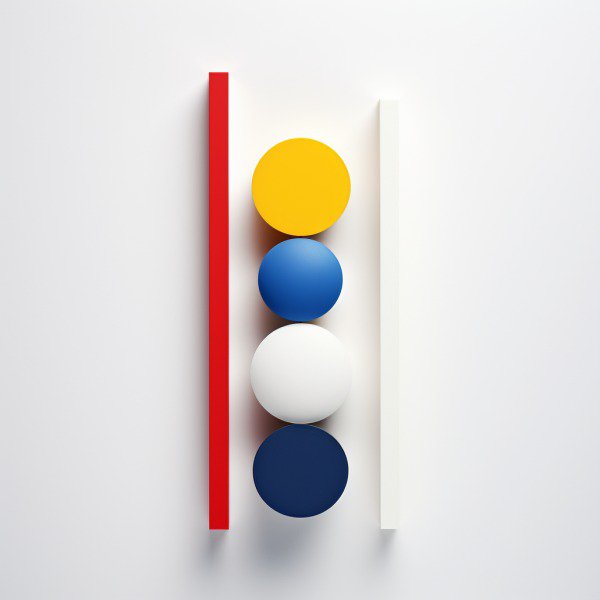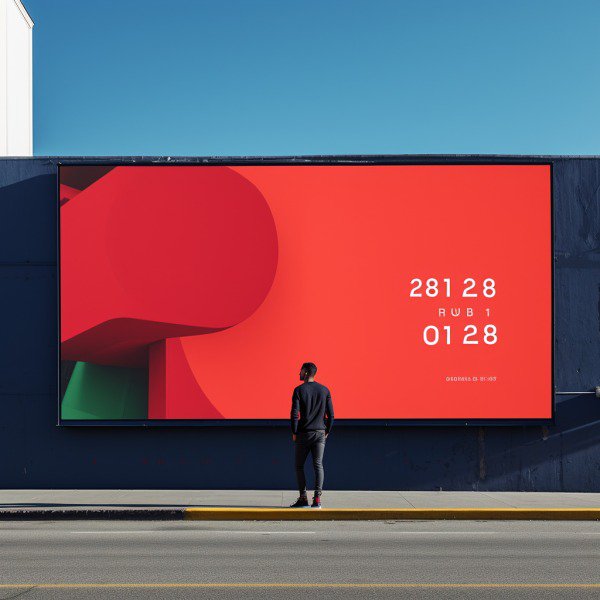Designers often use design principles to make the necessary decisions when designing a product or service. Often these decisions are simple (such as where to set up the Login button), and others require you to decide between two rival goals. Examples of these are design decisions like: “why are some websites less accessible than others?” Or “who are the best users?”
Designers have a choice about which goal to sacrifice best over a competitor to gain a higher market share. Design decisions made may feel arbitrary or subjective and may be a source of lengthy discussions among large design teams. So we have a set of universal design principles to guide designers in the decision-making process.
What is the definition of principles of design?
Design principles are rules or guidelines designers can follow to generate a more effective design. The various principles of design include balance, hierarchy, repetition, contrast, unity, and movement.
The most important thing for designers to remember is that there are no absolute right or wrong answers when it comes to applying these principles. Rather, the goal is to use them in a way that best suits the needs of the project at hand.
When applied correctly, design principles help to produce a more visually appealing and user-friendly final product or service. Designers can use balance, for example, to generate a sense of stability and calm, while repetition can help to establish a sense of cohesion and flow.
Meanwhile, contrast can be used to produce perceptible interest and draw attention to certain facets of the product design, while unity can help to make a design feel more complete and cohesive.
When it comes to making decisions about which design principle to use and how to best apply it, there is no one-size-fits-all answer. The best way to learn is by trial and error, and by studying the work of other designers to see how they have used these principles in their design process.

Design Principles – Laws with Leeway
Design principles help advice on how to create beautiful and memorable designs. You use this technique to select, design, or organize the details and features of your work.
The fundamental concept of design is the accumulation of knowledge among design experts. When you use these techniques, it is possible to predict the reactions of the world to your design or product.
For example, KISS (KISS: Keep things simple stupid) illustrates the principle in which you design for non-expert users, thus minimizing the potential problems your users may have. Frank Spillers’s design tips are examples based on individual design principles for designing actionable user experience mobile applications.
There are design principles that have a universal character and those that vary according to the field of application. For example, in architecture, there are different sets of rules than in web design. As a result, some concepts work well in one area but not so much in others. The key is to be aware of these differences and look for what suits your particular product.
What are the 10 main design principles?
There are design principles that designers can use to add value and make a memorable design but the universal design principles are the following:
Balance
Balance refers to the distribution of visual weight within a composition. It is used to make both symmetrical and asymmetrical designs. If the design was a scale, these elements should be balanced to make a design feel stable.
Hierarchy
Hierarchy is used to establish an order for each section in a composition. And it also utilizes several key principles, including size, color, contrast, alignment, repetition, and brightness, to emphasize certain characteristics of the design. It controls those factors to prioritize important sections within the design as a whole.

Repetition
Repetition involves the use of recurring facets throughout a composition. It can help in creating a sense of cohesion and flow. Associated with consistency, it refers to the repeating of details on a page. Whether it is repeating the font color for all your headings or adding a repetitive background pattern to your design, repetition not only makes a design consistent, it adds focus.
Contrast
As a principle of art, contrast refers to the arrangement of opposite components and effects. For example, light and dark colors, smooth and rough textures, and large and small shapes. Designers can use contrast in creating variety, and drama in an artwork.
Unity
In graphic design, unity is the principle that pulls together all the other parts of the design. It gives your design context. Each component of the piece should feel like it is related, rather than standing out in isolation or failing to fit with the rest of the design.
Movement
Movement is the path the viewer’s eye takes through the work of art, often to focal areas. Such movement are directed along lines, edges, shapes, and colors within the work of art.
Proportion
Proportion refers to the relationship in size between two or more sections in a composition. It creates both harmonious and unified designs. In general, a design achieves harmony when the sizes of the various pieces are in proportion to each other. In short, it gives your product design organization.
Emphasis
Design teams use emphasis to draw attention to certain articles of the design. It can be created through the use of color, size, shape, and placement. When using emphasis, it is important to remember that less is more. Too much emphasis on too many articles will result in a design that is chaotic and confusing.
Rhythm
Rhythm is used in creating visual interest and movement. It can be achieved through the use of repetition, pattern, and color. Rhythm is often used in conjunction with other principles, such as unity and emphasis, to achieve a piece that is pleasing to the eye and easy to understand.
Variety
Variety is used to add interest and visual excitement to a design. It can be done through the use of color, texture, shape, and placement. Variety helps to keep a design from feeling dull or stagnant. Too much variety, however, can result in a design that is busy and overwhelming.

The Value of Product Design Principles
The value of product design principles comes from the fact that they offer you a systematic way of thinking about design problems. This means that instead of just looking at each problem as it comes, you have a set of design principles to go through which gives you inspiration and forces you to think about all aspects of the design. A set of design principles can become the resources that you go back to time and time again, making your design process more efficient.
Design principles also offer a way for you to convey your ideas to other team members. By having a shared language of design principles, you can easily share and build upon each other’s ideas. This is especially valuable in team environments where multiple designers are working on
Why use design principles?
Many companies follow specific design principles and are embracing them in their product design. When you have a complex problem, design principles can help you break it down and find a solution. Design principles give you a language to communicate your ideas to the design team. They can help you evaluate design choices and make decisions about trade-offs.
Design principles can improve the teams’ design process by providing a common framework of reference. They can inspire creativity by giving you a structure to explore new ideas. And they can help you make better decisions by forcing you to think about all aspects of the design problem.

How to use design principles?
The first step is to choose the right design principle for your project. Not all design principles are created equal, and some will be more relevant to your product or service than others. Once you’ve selected the specific design principles that are most important for your product design, you need to start using them in your design process.
Once you’ve chosen a direction to pursue, continue to use the design principles to guide your decisions. As you’re making decisions about specific product features, think about how each one will impact the overall user experience. Will it help or hinder the users’ ability to achieve their goals?
Finally, don’t forget to revisit the design principles when you’re testing the product with users. See how well the product or service meets the users’ needs and see if there are any areas where it could be improved.
By integrating design principles into your product design process, you can make products that are more user-friendly, actionable, and effective.
Types of Product Design Principles
There are many different types of product design principles, but some of the most common and important ones include:
User-centered design principles
Companies use this principle in creating products that are easy to use and focus on the needs of users. Examples include simplicity, usability, and accessibility.
Design for manufacture and assembly
A company uses this principle to make products that can be easily and cheaply manufactured. Examples include modularity, standardization, and minimization of parts.

Design for environment
A business uses this principle to make products that have a minimal impact on the environment and support the world’s green movement. Examples include recyclability, biodegradability, and energy efficiency.
Functional design principles
Companies use these principles to make products that are effective and efficient. Examples include ergonomics, human factors, and user experience.
Aesthetics and brand
A business may use this principle to make a website that is visually appealing and positively represent the brand. Examples include color, texture, and shape.
What are some popular design principles?
Although several design principles are used by creators all over the world, these are our favorites:
KISS (Keep It Simple, Stupid)
Keep it simple, stupid (KISS) is a design principle that states that design and/or systems should be as simple as possible. The idea is that by keeping things simple, you make them easier to use and less likely to cause problems to the users. Wherever possible, complexity should be avoided in a system—as simplicity guarantees the greatest levels of user acceptance and interaction.
Occam’s Razor
Occam’s Razor states that the simplest solution is usually the correct one. It is a problem-solving principle devised in the 14th Century that states that simplicity is better than complexity. UX designers find that it empowers them to aim past the tendency to overthink their designs.
The Pareto Principle
The Pareto Principle, or the 80/20 rule as its also known, is a productivity hack of sorts. The idea behind it is: that 80% of the effects of any given process come from 20% of the effort put into it. To illustrate this in a user experience context, it’s like saying: that 80% of your users use 20% of your features.

Hick’s Law
Hick’s Law (or the Hick-Hyman Law) states that the more stimuli (or choices) users face, the longer it will take them to make a decision. For designers of all types, this presents a challenge, making it imperative to offer the most useful set of options to avoid frustrating the user.
How to decide on a set of design principles?
There is no one-size-fits-all answer, but here are a few things to keep in mind:
- Think about the goals of your product and who your target group of users is.
- Look at other products and see which design principles they use.
- Talk to other designers and get their input.
- Experiment and test different approaches.
Ultimately, it’s important to remember that design principles are guidelines, not rules. There is no right or wrong answer when applying these principles. Instead, the goal is to use them in a way that best suits the needs of the product and service.
When applied correctly, design principles can help to create simple, elegant, actionable, and effective designs. With that said, it’s essential to remember that they are just guidelines.
The best way to learn is by trial and error and through research. By studying the work of other designers to see how they have used these principles in their work, you will get inspiration for making a good design.
What is the difference between “emphasis” and “hierarchy” in design principles?
“Emphasis” is when you draw attention to a certain part of the design, while “hierarchy” is the order in which elements are arranged. For example, if you want to make a design with a strong focus on the headline, you would use emphasis. If you want to arrange the parts in your design so that the most important ones are seen first, you would use hierarchy.

What is the difference between “unity” and “harmony” in design principles?
“Unity” is when all the elements in a design work together to create a cohesive whole, while “harmony” is when all the elements in a design complement each other. For example, if you want to create a design that looks like one person made it, you would use unity. If you want to create a design that has a peaceful and calming feeling, you would use harmony.
What is the difference between “pattern” and “texture” in design principles?
“Pattern” is when you repeat an element throughout the design, while “texture” is the way an element feels. For example, if you want to create a design with a lot of visual interest, you would use a pattern. If you want to create a design that feels smooth and soft, you will use texture.
Takeaway
As you can see, there is a lot of overlap between these principles. The best way to learn how to use them is through research and experiments. Most of the time, tips in designing have always emphasized studying the work of other designers and experimenting with them in your system.
Research examples of a good design that uses each principle and see how you can apply it to your work. Remember, there is no one-size-fits-all answer, so don’t be afraid to experiment.
Design principles are guidelines, not rules. This means that you should not feel constrained by them when it comes to making decisions about your work. Rather, the goal is to use them in a way that best suits the nature of the project.
Design is a work in progress. As you continue to learn and grow as a designer, your understanding of these principles will evolve. So, don’t be afraid to revisit them from time to time and see how they can be applied in new ways.



